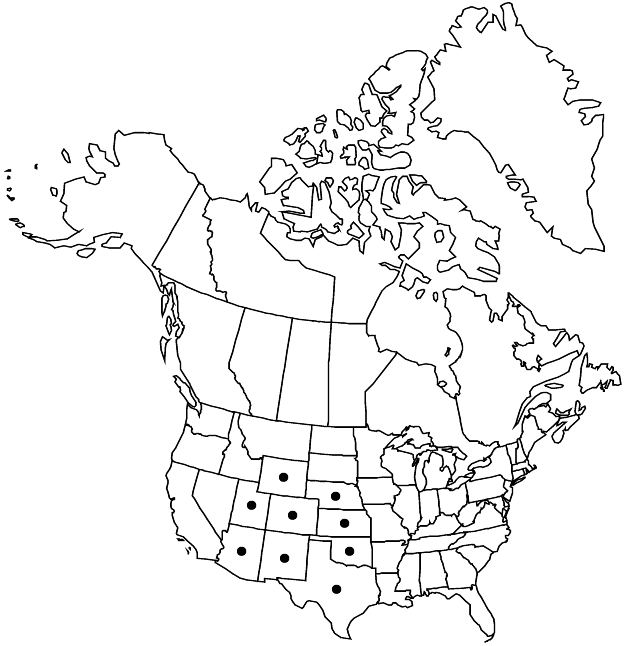Difference between revisions of "Eriogonum alatum"
in L. Sitgreaves, Rep. Exped. Zuni Colorado Rivers, 168, plate 8. 1853.
RevisionBot (talk | contribs) m (Bot: Adding category Revision Pending) |
RevisionBot (talk | contribs) m (Bot: Adding category Revised Since Print) |
||
| (One intermediate revision by one other user not shown) | |||
| Line 1: | Line 1: | ||
{{Treatment/ID | {{Treatment/ID | ||
|accepted_name=Eriogonum alatum | |accepted_name=Eriogonum alatum | ||
| − | |accepted_authority=Torrey | + | |accepted_authority=Torrey |
|publications={{Treatment/Publication | |publications={{Treatment/Publication | ||
|title=in L. Sitgreaves, Rep. Exped. Zuni Colorado Rivers, | |title=in L. Sitgreaves, Rep. Exped. Zuni Colorado Rivers, | ||
|place=168, plate 8. 1853 | |place=168, plate 8. 1853 | ||
|year=1853 | |year=1853 | ||
| + | }} | ||
| + | |special_status={{Treatment/ID/Special_status | ||
| + | |code=F | ||
| + | |label=Illustrated | ||
}} | }} | ||
|basionyms= | |basionyms= | ||
| Line 23: | Line 27: | ||
-->{{Treatment/Body | -->{{Treatment/Body | ||
| − | |distribution= | + | |distribution=Ariz.;Colo.;Kans.;N.Mex.;Nebr.;Okla.;Tex.;Utah;Wyo.;including Mexico. |
|discussion=<p>Varieties 2 (2 in the flora).</p><!-- | |discussion=<p>Varieties 2 (2 in the flora).</p><!-- | ||
--><p>The mature reddish roots of <i>Eriogonum alatum</i> can be distinctively chambered. The Navajo (Diné) people consider the species to be a “life medicine” (L. C. Wyman and S. K. Harris 1951), using a mixture of shredded roots and water primarily to treat internal ailments. The species is used also as a ceremonial medicine (P. A. Vestal 1952). The Zuni use it as an emetic for stomachaches (S. Camazine and R. A. Bye 1980).</p> | --><p>The mature reddish roots of <i>Eriogonum alatum</i> can be distinctively chambered. The Navajo (Diné) people consider the species to be a “life medicine” (L. C. Wyman and S. K. Harris 1951), using a mixture of shredded roots and water primarily to treat internal ailments. The species is used also as a ceremonial medicine (P. A. Vestal 1952). The Zuni use it as an emetic for stomachaches (S. Camazine and R. A. Bye 1980).</p> | ||
| Line 48: | Line 52: | ||
-->{{#Taxon: | -->{{#Taxon: | ||
name=Eriogonum alatum | name=Eriogonum alatum | ||
| − | |authority=Torrey | + | |authority=Torrey |
|rank=species | |rank=species | ||
|parent rank=subgenus | |parent rank=subgenus | ||
| Line 54: | Line 58: | ||
|basionyms= | |basionyms= | ||
|family=Polygonaceae | |family=Polygonaceae | ||
| − | |distribution= | + | |distribution=Ariz.;Colo.;Kans.;N.Mex.;Nebr.;Okla.;Tex.;Utah;Wyo.;including Mexico. |
|reference=None | |reference=None | ||
|publication title=in L. Sitgreaves, Rep. Exped. Zuni Colorado Rivers, | |publication title=in L. Sitgreaves, Rep. Exped. Zuni Colorado Rivers, | ||
|publication year=1853 | |publication year=1853 | ||
| − | |special status= | + | |special status=Illustrated |
| − | |source xml=https:// | + | |source xml=https://bitbucket.org/aafc-mbb/fna-data-curation/src/2e0870ddd59836b60bcf96646a41e87ea5a5943a/coarse_grained_fna_xml/V5/V5_785.xml |
|subfamily=Polygonaceae subfam. Eriogonoideae | |subfamily=Polygonaceae subfam. Eriogonoideae | ||
|genus=Eriogonum | |genus=Eriogonum | ||
| Line 70: | Line 74: | ||
[[Category:Treatment]] | [[Category:Treatment]] | ||
[[Category:Eriogonum subg. Pterogonum]] | [[Category:Eriogonum subg. Pterogonum]] | ||
| − | [[Category: | + | [[Category:Revised Since Print]] |
Latest revision as of 18:04, 6 November 2020
Herbs, monocarpic, 5–20(–25) dm, strigose or glabrous; taproot often chambered. Stems: caudex absent; aerial flowering stems usually 1, not fistulose, 2–13 dm, strigose or glabrous. Leaves basal and sometimes cauline; basal petiolate, petiole 2–6 cm, stigose to woolly or glabrous, blade linear-lanceolate or lanceolate to oblanceolate to spatulate, (3–)5–20 × 0.3–2 cm, strigose, becoming glabrous and green on both surfaces except for margins and midvein; cauline sessile, blade linear-oblanceolate to lanceolate, 1–9 × 0.3–0.8(–1) cm, similar to basal blade. Inflorescences 2–10 dm; branches strigose or glabrous; bracts semileaflike proximally, linear to linear-lanceolate, 2–9 × 1–3 mm, scalelike distally, triangular, 0.8–5 × 0.5–2 mm. Peduncles erect, straight or curving upward, 0.5–3.5 cm, strigose or glabrous. Involucres turbinate to campanulate, 2–4(–4.5) × 2–4(–4.5) mm, strigose or glabrous; teeth 1–1.8 mm. Flowers 1.5–2.5 mm in anthesis, 3–6 mm in fruit; perianth yellow to yellowish green, rarely maroon in anthesis, often reddish or maroon in fruit, glabrous; tepals lanceolate; stamens 1.5–3 mm; filaments glabrous. Achenes yellowish green to reddish brown, 5–9 mm, glabrous, 3-winged entire length, beakless.
Distribution

Ariz., Colo., Kans., N.Mex., Nebr., Okla., Tex., Utah, Wyo., including Mexico.
Discussion
Varieties 2 (2 in the flora).
The mature reddish roots of Eriogonum alatum can be distinctively chambered. The Navajo (Diné) people consider the species to be a “life medicine” (L. C. Wyman and S. K. Harris 1951), using a mixture of shredded roots and water primarily to treat internal ailments. The species is used also as a ceremonial medicine (P. A. Vestal 1952). The Zuni use it as an emetic for stomachaches (S. Camazine and R. A. Bye 1980).
Selected References
None.
Key
| 1 | Flowering stems and inflorescence branches usually strigose; peduncles strigose or nearly so; involucres strigose, rarely glabrous; plants 5-13(-17) dm; n Arizona, Colorado, w Kansas, sw Nebraska, New Mexico, w Texas, e Utah, se Wyoming | Eriogonum alatum var. alatum |
| 1 | Flowering stems and inflorescence branches glabrous or nearly so; peduncles glabrous, occasionally slightly strigose; involucres glabrous; plants 10-20(-25) dm; ne New Mexico, w Oklahoma, n Texas | Eriogonum alatum var. glabriusculum |